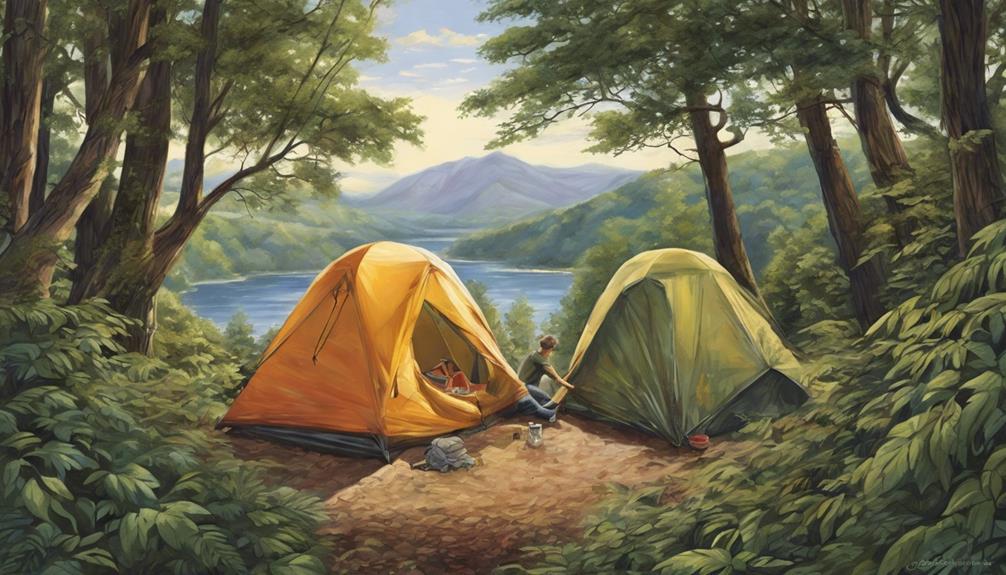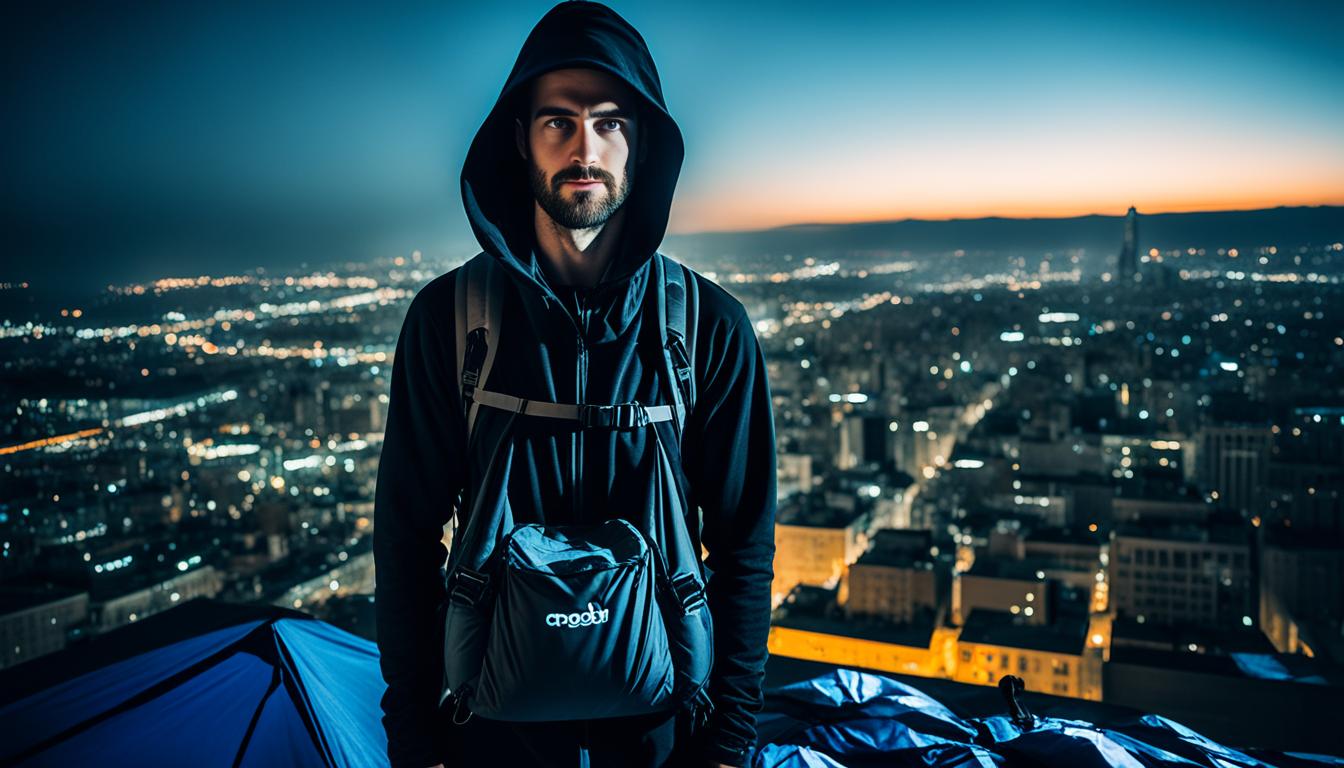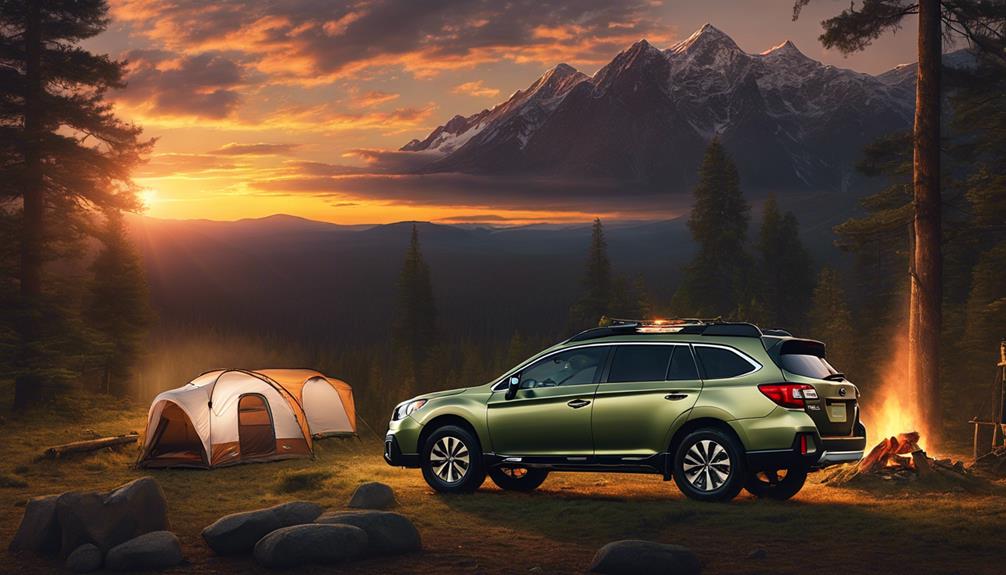As we explore the boundaries of legality during our camping trips, it feels like we are walking on a tightrope above a complex legal maze. The temptation of discovering the ideal secluded spot to set up a tent under the night sky attracts many, but the truth is far from simple.
From the crackling of twigs underfoot to the distant hum of passing cars, the risks of stealth camping extend beyond just the thrill of the adventure.
Stay with us as we unravel the web of reasons why this seemingly innocent act can quickly turn into a legal quagmire.
Key Takeaways
- Stealth camping violates urban regulations and can result in legal consequences.
- Environmental damage concerns, like waste disposal and habitat destruction, are associated with stealth camping.
- Trespassing on private property for camping without permission is illegal and punishable.
- Fire hazards from campfires and safety risks pose significant dangers in stealth camping scenarios.
Legal Restrictions on Camping Areas
Legal restrictions on camping areas are implemented by many cities to regulate where individuals can camp within their borders, often leading to prohibitions on stealth camping in urban areas. These local regulations aim to maintain order, protect public spaces, and address concerns such as sanitation and safety.
In urban settings, the practice of stealth camping, which involves setting up temporary shelters in undesignated areas, can pose risks to both the individuals camping and the community at large. Laws prohibiting overnight parking or sleeping in vehicles in certain locations are also part of these legal restrictions.
City ordinances extend to private property as well, making it technically illegal to park and camp without permission in specific areas. Enforcement of parking restrictions, especially along city streets during designated hours, can result in citations or other legal consequences.
Moreover, jurisdictions may implement bans on sleeping in vehicles to manage issues like homelessness and ensure public spaces are used appropriately.
Environmental Damage and Conservation Concerns
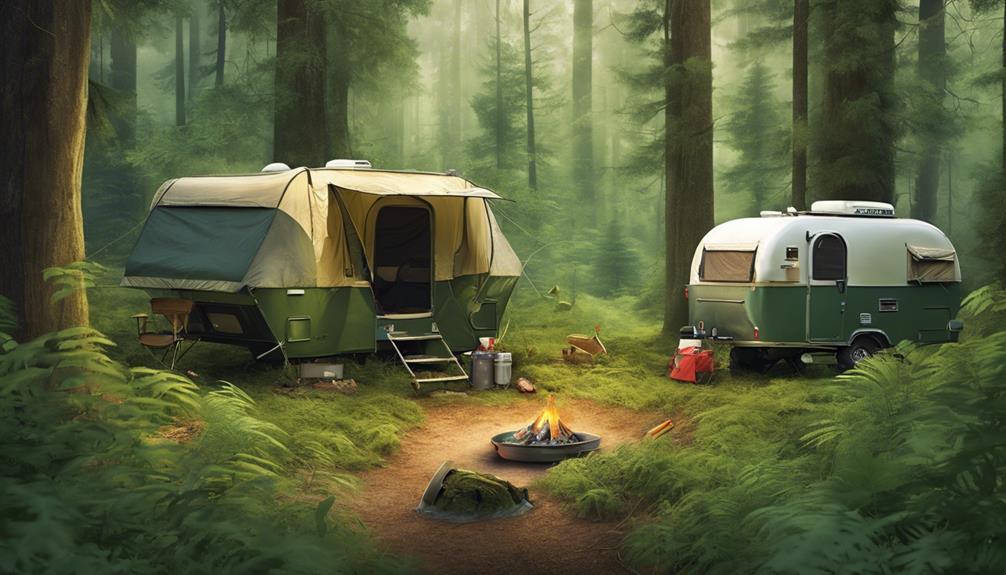
Enforcement of laws against stealth camping is often motivated by concerns over environmental damage and conservation issues, particularly in sensitive ecosystems. When campers engage in illegal camping practices, they pose significant threats to the environment, including:
- Waste Disposal: Improper disposal of trash and human waste can contaminate soil and water sources, leading to long-term environmental degradation.
- Habitat Destruction: Setting up campsites in fragile ecosystems can result in the destruction of natural habitats for plants and animals, disrupting delicate ecological balances.
- Wildlife Disturbance: Campers may inadvertently disturb wildlife during their stay, causing stress to animals and interfering with their natural behaviors.
These actions can also contribute to vegetation damage, soil erosion, and water contamination, further highlighting the reasons why stealth camping is often considered illegal. By recognizing and addressing these conservation concerns, authorities aim to safeguard the environment and promote responsible outdoor practices for sustainable enjoyment of natural spaces.
Trespassing and Private Property Rights
Entering private property without permission is a common offense associated with stealth camping, often resulting in legal consequences due to violations of private property rights. When individuals engage in stealth camping on private property without the landowner's consent, they're trespassing, infringing on the rights of the property owner.
Private property rights are in place to safeguard landowners from unauthorized camping and trespassing activities. Camping on private property without permission is illegal, regardless of the duration of the stay. Those caught engaging in stealth camping may face fines or even criminal charges for trespassing.
These consequences serve to uphold the principles of property rights and deter individuals from unlawfully occupying private lands for camping purposes. It's essential for campers to respect landowners' rights and seek proper permission before setting up camp to avoid legal repercussions associated with trespassing on private property.
Fire Hazards and Safety Risks
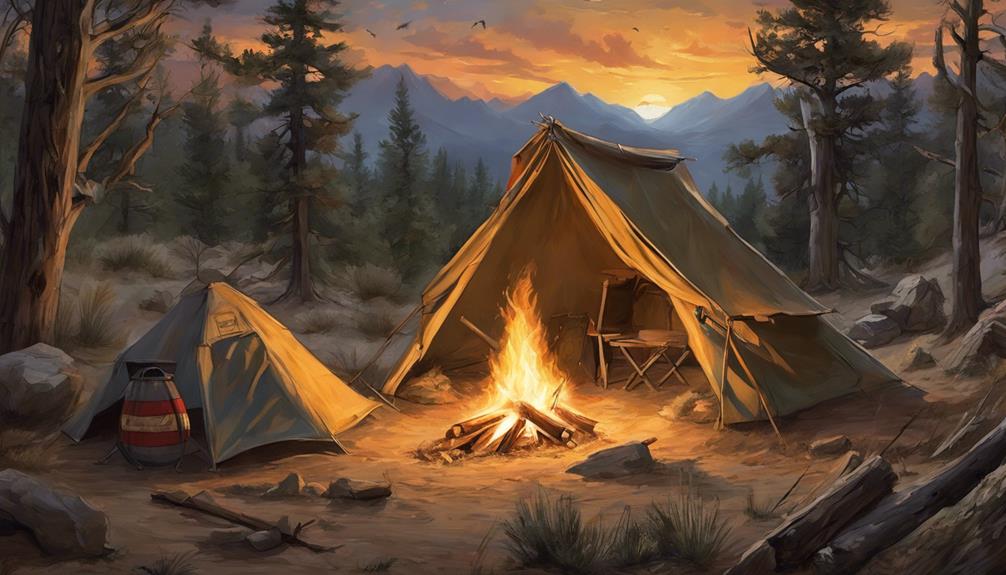
When considering stealth camping, one critical aspect that demands attention is the potential for fire hazards and safety risks associated with campfires in natural environments. Campfires and open flames can pose a significant fire hazard, particularly in dry and wooded areas, increasing the risk of wildfires. Improperly extinguished fires not only endanger lives, property, and natural habitats but also result in legal consequences such as fines and damage to the environment. Igniting fires in restricted areas without permits can have severe repercussions, including environmental damage and penalties.
- In dry areas, a single spark from a campfire can quickly escalate into a raging wildfire, putting lives and ecosystems at risk.
- Wooded areas present additional challenges, with the dense vegetation serving as fuel for potential fires, spreading rapidly and uncontrollably.
- Improperly extinguished fires can smolder undetected, reigniting and causing harm long after campers have left, emphasizing the importance of thorough fire safety practices.
To mitigate these risks, campers should adhere to fire regulations, use safe alternatives like portable stoves, and prioritize responsible fire management to ensure a safer camping experience.
Law Enforcement and Public Nuisance Issues
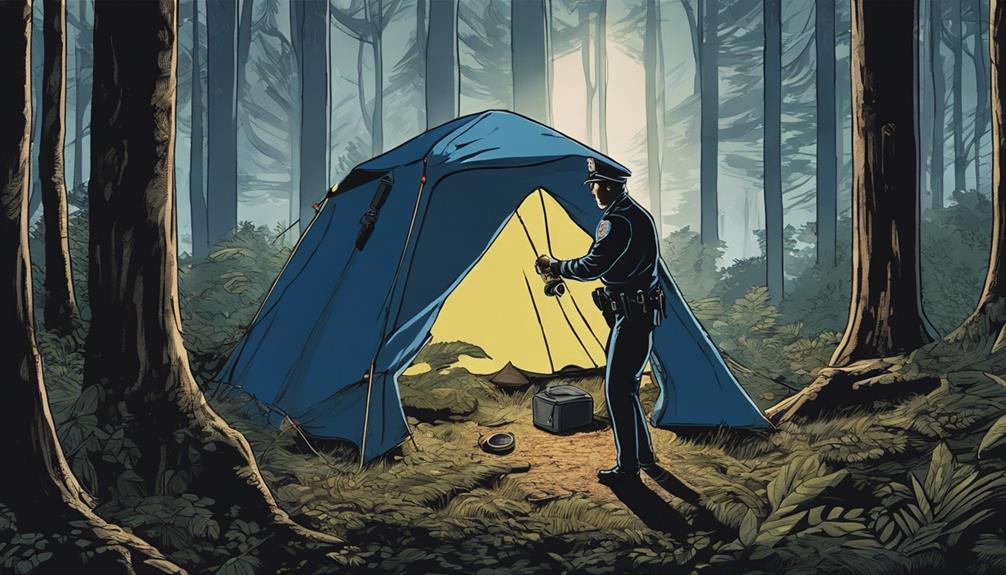
In urban areas, the enforcement of anti-stealth camping laws addresses public nuisance issues related to unauthorized camping activities. Law enforcement agencies play a crucial role in upholding regulations that aim to prevent public health and safety risks associated with stealth camping.
Public nuisance issues such as littering, noise disturbances, and safety concerns can arise from unauthorized camping in urban settings. Cities implement these laws to avoid overcrowding, sanitation problems, and conflicts with local residents or businesses that may result from stealth camping.
By enforcing anti-stealth camping laws, authorities seek to maintain order, protect public property, and ensure community well-being. The enforcement of these regulations serves to safeguard public spaces, minimize disruptions, and uphold standards that contribute to the overall quality of life in urban environments.
In doing so, law enforcement efforts play a vital role in promoting safety, cleanliness, and harmony within the community.
Frequently Asked Questions
How Illegal Is Stealth Camping?
Stealth camping can be highly illegal depending on local ordinances and laws. Violating these regulations may result in fines, citations, vehicle towing, or even criminal charges in some areas.
The level of enforcement varies across different locations, with urban areas often cracking down more aggressively. To avoid legal consequences, it's crucial to understand the laws governing stealth camping in specific places and respect the regulations to ensure a trouble-free camping experience.
What's the Deal With Stealth Camping?
Stealth camping involves discreetly camping in unauthorized areas. It can be a risky choice due to potential legal issues. While it offers a sense of adventure, understanding local regulations and respecting property rights are crucial.
Despite the thrill, it's essential to weigh the consequences of fines or citations. Ultimately, the decision to stealth camp requires careful consideration and adherence to the law.
Are Stealth Vans Legal?
Stealth vans may or may not be legal, depending on the location's laws and regulations. It's crucial to research beforehand to avoid fines or citations.
Some cities have ordinances against sleeping in vehicles, making stealth camping in vans illegal. Understanding the specific rules of each area is essential to prevent legal consequences.
Always prioritize safety and compliance when considering stealth camping to avoid potential issues with the law.
How Do You Get Away With Stealth Camping?
We find that getting away with stealth camping involves choosing discreet locations, like industrial areas, and using window covers and soundproofing to stay under the radar.
It's crucial to avoid setting up obvious camping gear and to be aware of local laws. Maintaining a low profile and respecting regulations are key factors in successfully utilizing stealth camping techniques.
These strategies help us enjoy the benefits of stealth camping while minimizing the risk of detection.
What Are the Potential Legal Consequences of Illegal Stealth Camping?
Stealth camping legal tips are crucial to avoid potential consequences. Engaging in illegal stealth camping could lead to trespassing, littering, or violating local camping regulations. Penalties may include fines, community service, or even criminal charges. It’s important to research and follow the laws and regulations of the area to avoid legal trouble.
Conclusion
In conclusion, stealth camping can be a risky endeavor due to the numerous legal implications and safety concerns involved. It's important to understand and respect the laws and regulations in place to avoid potential citations or fines.
As the saying goes, 'ignorance of the law is no excuse.' It's essential to prioritize safety and environmental conservation when considering stealth camping to ensure a positive and responsible outdoor experience.

